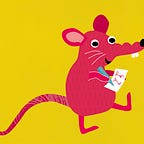Lunacy, Part IV
Now that we’ve dealt (somewhat) with movies that have “moon” in the title, let’s move on to books. Whoa! Not an easy task. When you search on “moon” on the GoodReads website, up pops page 1 (20 titles) of “about 178,217” results. First on the list is New Moon of the Twilight series, second is Goodnight Moon (only second?), and third, not surprisingly given the movie release, is Killers of the Flower Moon. Farther down the list is the Robert Heinlein science fiction classic The Moon Is A Harsh Mistress.
The most interesting title in the initial list of 20 is Kelly Barnhill’s The Girl Who Drank the Moon, which begins “Yes. There is a witch in the woods. There has always been a witch” and follows that chapter with one titled “In Which an Unfortunate Woman Goes Quite Mad.” So what’s the literary obsession with the moon, you might ask? And if you didn’t, I did.
Fortunately for me, David Seed, writing in Nature, provides an answer in “Moon on the mind: two millennia of lunar literature.” He begins his essay this way:
The Moon’s luminous, cratered face, visible to the naked eye, has sparked the imaginations of writers and scientists for centuries. Our satellite became a blank canvas: a proxy Earth on which writers could project alternative societies and satirize terrestrial ones, and a fruitful testing ground for scientific and technological speculation.
The first instance of luniterature [books about…you get it] mentioned by Seed is the second-century Syrian satirist Lucian of Samosata (who knew they had satirists back before 200 AD?), who wrote “A True Story” about travelers “blown to the moon by a whirlwind.” Once there, “in a satire on Earthly territorial conflicts, they encounter a war between Sunites and Moonites. Lucian’s Moon-dwellers are tall humanoids dressed in woven glass and subsisting on frogs.”
The stories, poems, and novels involving the moon seem countless and, before science ruined everything by telling us what it’s really like there, eminently whimsical. Hans Christian Andersen, for example, wrote “The Galoshes of Fortune” in which a watchman mistakenly dons a pair of magic boots and ends up walking on the moon. In “The Princess of the Moon: A Confederate Fairy Tale,” written in 1869,
a “Fairy of the Moon” descends to Earth to save a Confederate soldier from his grief after the U.S. Civil War. She gifts him with a Pegasus steed that can fly him anywhere. After surveying the South and the Union, he flies to the Moon, meets the king of the Moon and his people, falls in love with the princess, and helps their kingdom fight off an invasion of Union soldiers arriving in balloons.
My theory is that humans, never able to leave well enough alone, saw the moon hanging above them night after night and were not pleased. “It can’t just sit there,” they probably thought. “We must do something with it.” So they turned it, as David Seed suggests, into an imagerator (a machine that sparks “an act or process of forming a conscious idea or mental image of something never before wholly perceived in reality”). When you think about it, the moon is the perfect cure for writer’s block. Bereft of creative ideas? Just stare up at it’s surface, especially on full moon nights, with the PIM (person in the moon) smiling gently down upon you, and the ideas will come.
Of course, there is the dark flip side to this idea. Perhaps it is not humans making something of the moon but the moon making something of us. Perhaps all the Selenites or Moonites or whatever that have been abused by us over the ages have invented a powerful distractor beam (a moonbeam, naturally) that mesmerizes anyone who looks at our satellite into a stupor while they sneak down and carry off, I don’t know, every existing case of Lorna Doone cookies (that’s what I would take). And all this time we thought those empty shelves in the grocery store were due to supply-chain issues.
(Image: Illustration from Jules Verne’s 1865 novel From the Earth to the Moon. Public domain.)
